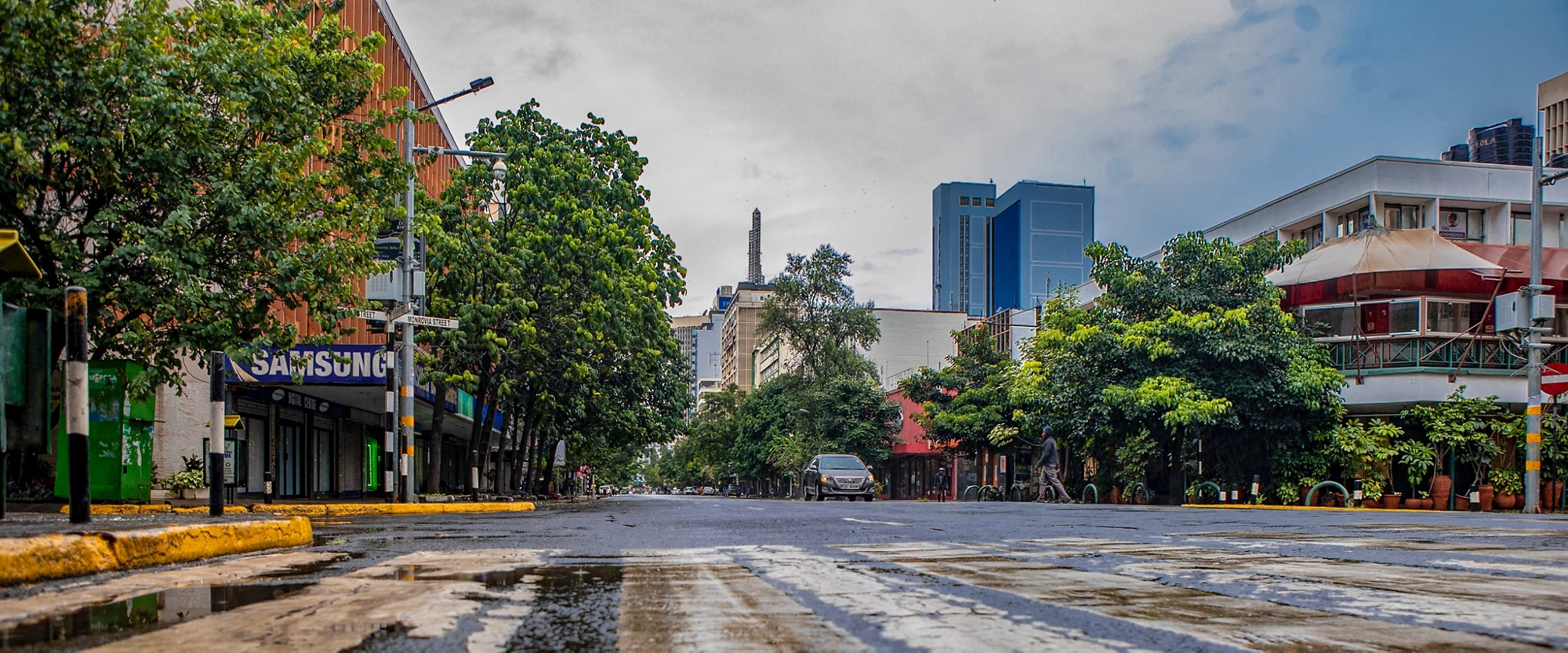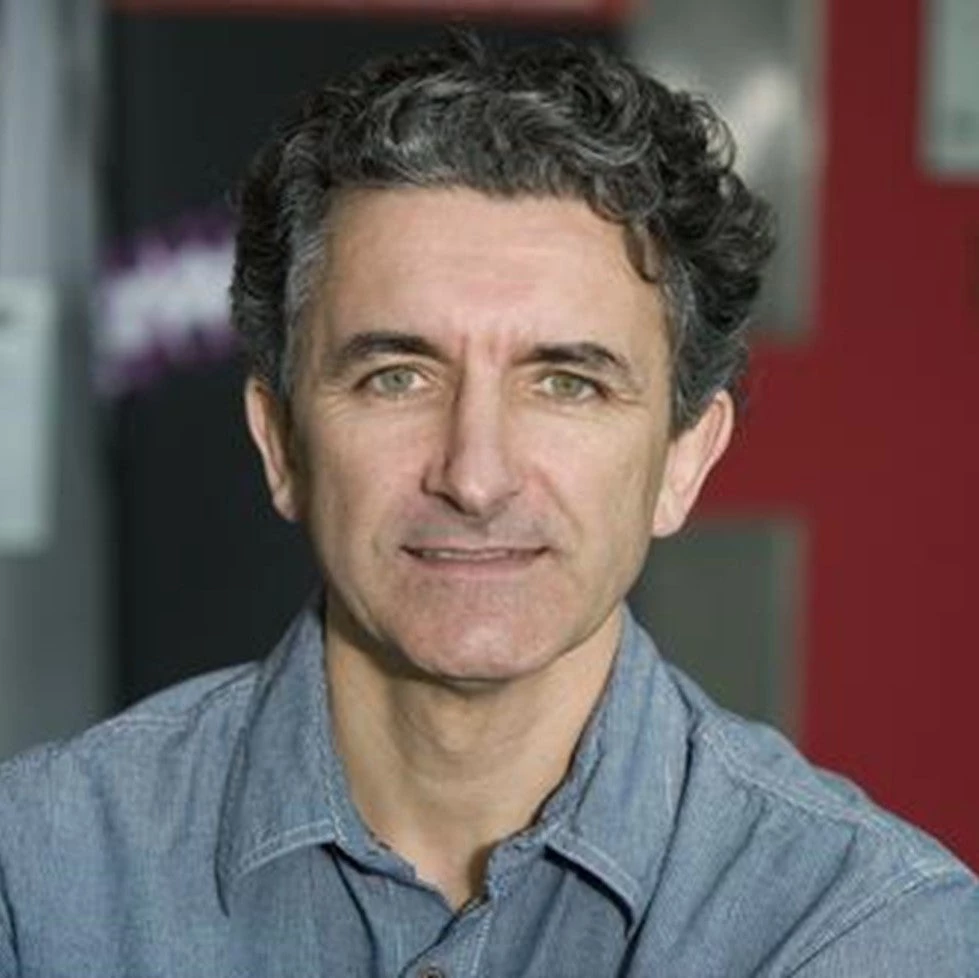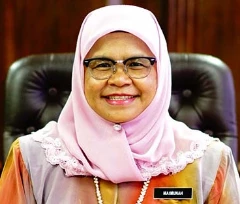 Empty Nairobi Street. Photo credit: Sambrian Mbaabu/ World Bank.
Empty Nairobi Street. Photo credit: Sambrian Mbaabu/ World Bank.
Across the globe, COVID-19 is threatening cities and communities, endangering not only public health, but also the economy and the fabric of society. COVID-19 is already having a deep, multidimensional impact and is expected to create the worst economic contraction in decades, with job losses already at an all-time high.
Given these shocks, the World Bank estimates that about 100 million people will likely fall into poverty due to the impact of the pandemic, with as many as 49 million falling into extreme poverty. Many of these “new poor” will be people living in cities and who are self-employed, mostly working in the informal sector. Cities are on the front line of coping with the pandemic and its lasting impacts.
Residents of slums and informal settlements are particularly vulnerable. The one billion people who live in slums and informal settlements lack infrastructure and basic services, including water, sanitation, waste collection and access to basic health care. Many rely on communal water and toilet facilities, which accelerates infection rates. Physical distancing is often impossible in these overcrowded areas. Many residents in these communities have irregular income and unstable jobs, and are unable to put food on the table amid lockdown policies. There are no social safety nets to support them and their families.
Against a backdrop of mounting vulnerability and increasing needs, both national and local governments are confronted with severely strained financial resources. Lower exports, a decline in tourism revenues and remittances, and an acute contraction of economic activities are translating into a precipitous drop in tax revenues. We expect local authorities to have 15% to 25% less revenues next year, making it difficult to maintain current levels of service delivery, let alone invest in improving slum areas.
Cities must fight COVID-19 in three different – and often overlapping – phases:
- The emergency phase, focusing on preventing disease transmission and caring for the affected;
- The early recovery phase, focusing on mitigating the impact on vulnerable groups, jumpstarting the local economy, and planning for the new normal, under fiscally strained conditions; and
- The new normal, with all the uncertainties around the future of work and density among others.
Emergency phase
Cities play a critical role during the emergency phase by supporting health care services, maintaining basic infrastructure and providing services, raising public awareness on hygiene and how to slow down the infection rate, and providing support to those whose livelihoods have been affected. And in the many areas where governments’ social protection registries are not up to date, cities need a place-based approach targeting slums and informal settlements that house the urban poor as well as the “new poor” whose livelihoods have been affected.
The city of Buenos Aires, Argentina, for instance, is focusing on the enormous challenge in informal settlements. In Barrio 31, the city scaled up communication efforts, including via WhatsApp and Facebook, as well as awareness campaigns. Care is prioritized for at-risk persons, including those in overcrowded housing and older people, who are offered relocation to hotels and other facilities to allow for physical distancing as a preventative measure. Special attention is given to women and children at risk of increased domestic violence through a focus on early detection, scaled up social services, and sensitizing of neighbors. Additional support includes meals for school children, food distribution to poor households, and community kitchens.
Poor people whose livelihoods has been affected need access to safety nets, including cash and food. In India, the government of Uttar Pradesh is providing income support to informal workers who lost jobs due to the pandemic, including food vendors, rickshaw drivers, and construction workers. The city of Quito, Ecuador, has scaled up distribution of food through mobile municipal units and food markets.
Vulnerable groups need special attention to prevent further deterioration of living conditions. Several countries such as El Salvador have introduced temporary moratoria against evictions for those unable to pay rent or their mortgage, as well as policies to prevent utilities from disconnecting services such as water and electricity to those unable to pay their bills. In Peru, the city of Lima has provided temporary shelter for its homeless population, in addition to distributing food for vulnerable groups.
Another hard-hit group are those working in the cultural and creative industries. Confinement policies have resulted in the closure of museums, opera houses, and restaurants and forced the cancellation of public events, festivals, and shows. To safeguard this sector, which is central to its identity, the city of Melbourne, Australia, launched a grant program to support artists whose livelihoods are affected.
With their delivery capacity limited by a drop in revenues, cities need more help than ever before from the private sector and civil society. In Indonesia, the private sector is providing rapid test kits at low cost to reduce the burden on the over stretched public health care system. In Bangladesh, civil society organizations are providing free shuttle services for health care workers. And in South Africa, a social enterprise purchases produce directly from small-scale farmers and matches them with nearby community organizations who distribute food or cooked meals to poor beneficiaries.
Community ownership is especially important. In informal settlements in Indonesia, community-led initiatives for the production and distribution of masks, food and disinfectants, and monitoring of health conditions are supported through the national slum upgrading program KOTAKU. This helps strengthen the resilience of those living in deprivation and marginalization against the many challenges facing them.
In addition, cities need to give priority attention to marginalized groups during lockdown and distancing measures. This includes women subjected to increased incidence of gender-based violence or who are dispossessed of their land or property following the death of a male relative from COVID-19, older people isolated at home, children whose education and nutritional support are cut off, people living with disabilities, and groups who face discrimination.
The early recovery phase
Informal sector workers with unstable jobs, irregular incomes and no safety nets need particular support in jumpstarting their livelihoods. Labor-intensive public works programs such as Kenya’s Kazi Mtaani are an important instrument. This program targets informal settlements in Nairobi and Mombasa and uses labor-intensive approaches to create employment opportunities for youth and affected informal sector workers. The first phase aims to create 26,000 employment opportunities in street cleaning, fumigation and disinfection, garbage collection, drainage clearing, and production and distribution of face masks.
In addition to the focus on the poor and vulnerable, jumpstarting cities’ economy is critical to give a boost to local businesses and especially small and micro-enterprises that are hard hit. Policies such as temporary property tax abatements, scaling up public works and targeted procurement are key to support local businesses, complementing stimulus packages by national governments.
The implementation of recovery plans requires city governments to coordinate with many stakeholders – sectoral agencies, the private sector, and community groups – to develop integrated measures and prioritize investments. Establishing a metropolitan coordination entity or mechanism will help facilitate collaboration among the many agencies delivering services and carrying out investments and resilience measures.
This pandemic provides three main lessons to national and city governments as they launch recovery efforts and plan for the new normal.
- First, the places most affected are not simply large cities or those with high population density. They are places with poor, overcrowded housing, lacking infrastructure services, especially water and sanitation, and with minimal open spaces such as informal settlements. This will require working with communities and investment to provide access to affordable housing, basic infrastructure and services.
- Second, the people who are worst hit are the poor and vulnerable – informal sector workers, irregular income earners, older people, people living with disabilities, children deprived of schooling and nutrition. This will require prioritizing policies to confront spatial, social and economic exclusion with the aim of leaving no one behind.
- Third, strengthening city preparedness and emergency response capacity is critical. This means better preparedness in terms of financing, service delivery and business continuity including budgeting for future crises, emergency operations centers, capacity building, drills, and human resources redeployment plans.
New normal phase
As they emerge from this pandemic, cities will need to strengthen their resilience by investing in better emergency preparedness and integrating public health risks into disaster management systems. Risk reduction measures include adapted zoning, land use, and territorial planning to regulate high-risk uses, including the location and hygienic operation of wet markets and abattoirs. Cities also need improved and more diverse finances to enable a stronger role in emergency response and recovery.
Many questions and uncertainties need to be addressed as cities emerge from the pandemic:
- Will city residents still want to live in densely populated areas or prefer to move to smaller cities or less dense suburbs?
- What is the socio-cultural legacy of human interactions after social distancing? Will online gatherings partly replace actual experience and interface in physical spaces?
- How will public transit systems adapt to health risk and attract passengers back? Will cities implement more bicycle lanes and wider pedestrian networks, with emergency measures evolving into permanent solutions? For example, Auckland, New Zealand, is adding footpaths to maintain 2-meter distancing, and Bogota, Colombia, is implementing 70 km of bicycle lanes.
- How can cities localize their supply chains (especially food) to be more self-sufficient?
- How will digital infrastructure and solutions evolve to serve many more facets of urban life?
- What will be the future of work and education after extended telework and distance learning? Will this be the end of the central business district?
Answering these questions will determine whether cities can better adapt and become more resilient. By applying a wide range of insights and innovations from technology, sociology, placemaking, urban planning and design, and policy making, we can help cities continue to play their indispensable role far into the future.
The World Bank’s City Resilient Program, UN-Habitat Urban Resilience Hub, UN Office for Disaster Risk Reduction’s Making Cities Resilient Campaign (and its successor MCR 2030 to be launched by the end of this year), and the Global Resilient Cities Network’s Cities for a Resilient Recovery Program are all important initiatives to strengthen cities’ resilience and disaster preparedness and to help shape the cities of the future through collaboration and knowledge exchange.
Related links:
- Subscribe to our Sustainable Cities newsletter
- Follow @WBG_Cities on Twitter






Join the Conversation